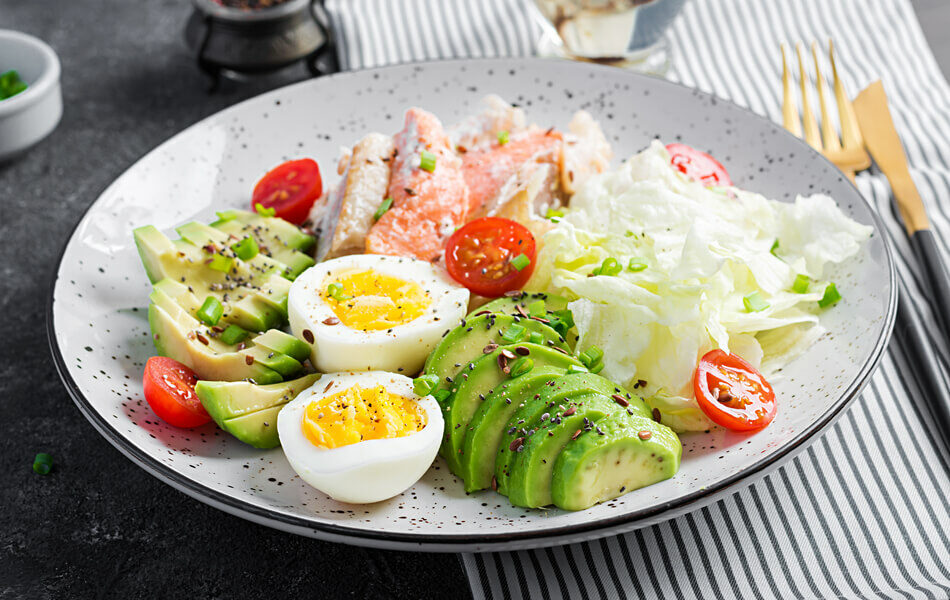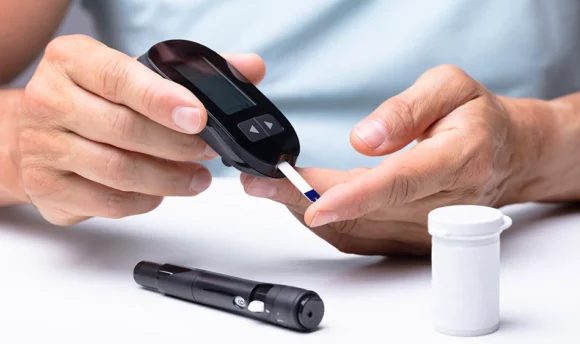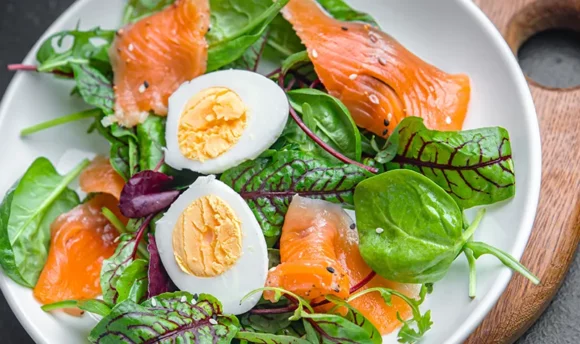How Many Carbs on Keto Can You Eat for Success?
Keto diets center around carbohydrate restriction to move the body into a state of nutritional ketosis. Fats make up most of the diet, while carbs are kept to a minimum. We explain how many carbs to include in your eating plan, carbs to eat and avoid, and keto-friendly fruits and vegetables.

So, you want to try the keto diet.
You’ve probably heard about the major health benefits of keto, from significant weight loss to improved metabolic health. Whatever your reasons for beginning the diet, it’s critical that you know the basics before jumping in. That way, you can ensure you get results with keto.
Most people know that keto is a very low-carb diet, but you may not be clear on the exact macros requirements. Carbs can make or break your keto diet. Monitoring your intake is a requisite, as you will be unable to facilitate nutritional ketosis without a strict limit on carbs.
In this article, we bring you all you need to know about carb intake on the keto diet.
How Many Carbs on Keto Should I Eat?
On the whole, ketogenic diets typically recommend consuming under 50 grams of net carbs per day. Some keto dieters may reduce the daily carb limit to as little as 20 grams. As a general rule, the macros requirements for keto from total daily calories are 70–80% fats, 10–20% protein, and only 5–10% carbohydrates. Some modifications switch things up.
The concept behind the keto diet is that you restrict your carb intake enough to deplete your glycogen stores. Ordinarily, you eat carbs, and your body converts those carbs into glucose to supply cells with energy. When the carbs are gone, the body must find an alternative fuel.
It begins to burn fat and produces ketone bodies – water-soluble molecules that supply energy. When this occurs, your ketone levels are higher than usual, and you enter the metabolic state known as nutritional ketosis. Your insulin levels drop, and you begin to lose fat.
There are four types of keto diets. Most of us are familiar with the standard ketogenic diet (SKD). It is a very high-fat, low-carbohydrate diet with a moderate protein intake. It follows the macronutrient guidelines above and is the most practiced keto diet.
The other three differ slightly. So, before getting started with keto, you must determine the keto diet you want to follow, as this will affect how many carbs you should eat per day. Below, you can see an overview of each diet and its requirements.
- The cyclical ketogenic diet (CKD): This modified version entails cycles between periods of low and high carbohydrate intake. Some people practice the strict ketogenic diet for five days before switching to two days with a higher carbohydrate intake.
- The targeted ketogenic diet (TKD): With the targeted version, you can increase your carbohydrate intake during windows of high-intensity workouts.
- The high-protein ketogenic diet (HPKD): You can increase your protein intake in this diet. The macros ratio is roughly 60% fats, 35% protein, and 5% carbohydrates.
How to Calculate Carbs on Keto
Now you know the importance of keeping track of your carbs, you need to know how to actually calculate them. First of all, not all carbs are equal. When we talk about carbs, we’re referring to net carbs or net carbohydrates. Let’s take a look at net carbs vs. total carbs.
What are total carbs?
Total carbs refer to the entire carbohydrate content in a serving of food. It includes all types of carbohydrates, even those your body cannot fully digest, like dietary fiber, starches, and sugar alcohols. These carbs do not affect blood sugar and insulin levels in the same way.
You can find the total carb count on food labels.
What are net carbs?
Net carbs are the carbs your body can fully digest and convert into glucose for energy. It does not include indigestible carbs like fiber and sugar alcohols. To calculate net carbs, you must subtract the fiber content and half the amount of sugar alcohols from the total carb count.
For example, if you eat a food serving with 30 grams of total carbs that includes 10 grams of fiber, your net carbs per serving is 20 grams.
How to Calculate My Carb Limit
The perfect keto carb limit can look a little different for individuals. While the generic macros ratio for keto is 70–80% fats, 5–10% carbohydrates, and 10–20% protein, some people have different needs. You might need a little more or a little less of a particular macronutrient.
Lots of factors can affect your dietary needs. Variables such as age, sex, body weight, body composition, health status, and physical activity level can influence the number of calories you need.
They can also impact how your body uses and optimizes nutrients to keep you functioning at your best.
You can use our keto macros calculator to find your ideal carb intake. Just add your age, gender, height, weight, and activity level to generate a proposed eating plan. It provides a macro percentage breakdown and recommends total calories and macros in grams per day.
With a personalized calculation, you can successfully get into ketosis and remain in nutritional ketosis until you reach your health goals.
List of Carbs You Can Consume on Keto
Although the specific ratio of carbs on the ketogenic diet can vary from person to person, the carbohydrate foods to eat and avoid are more clear. The best way to handle your carb intake is by choosing low-carb foods that won’t quickly eat up your daily carb budget.
You should also aim to eat healthy foods to ensure you’re getting enough nutrients in your diet. Focusing on the quality and nutritional content of foods is known as practicing clean keto. The alternative is dirty keto, where you eat lazy keto foods to achieve ketosis, such as processed and packaged foods.
Below are some low-carb foods that won’t prevent you from achieving ketosis.
- Fish and seafood
- Meat and poultry such as chicken, turkey, beef, and lamb
- Non-starchy vegetables
- Full-fat dairy products like cheese, eggs, and Greek yogurt
- Nuts and seeds
- Nut butter
- Coconut oil and other healthful oils
- Cocoa powder and dark chocolate in moderation
List of Carbs You Should Avoid on Keto
To enter nutritional ketosis and stay there, you need to eliminate high-carb foods that raise your glucose levels. Refined carbs are highly processed and have more net carbs. It’s best to avoid these entirely if you want to lose weight on keto.
So, you should avoid the following foods on the ketogenic diet:
- Refined carbs such as white bread, white flour, white rice, pasta, pastries, pizza dough, and sugary breakfast cereals
- Starchy vegetables like potatoes, corn, beets, and turnips
- High-carb fruits, including bananas, apples, nectarines, and mangoes
- Candy, soda, and fruit juices
Keto-Friendly Fruits and Vegetables
Eating whole foods, including fruits and vegetables, is essential while following the keto diet. These foods are full of vitamins and minerals that support your overall health and may prevent nutritional deficiencies from occurring while on keto.
Fruit and vegetables are also a staple of keto for vegetarians, alongside plant-based protein and fats. Here are some examples of keto-friendly fruits and non-starchy veggies for your diet.
Keto-friendly fruits
- Avocado
- Tomatoes
- Berries, including blackberries, raspberries, and strawberries
- Watermelon
- Cantaloupe
Keto-friendly vegetables
- Asparagus
- Broccoli
- Cauliflower
- Brussels sprouts
- Cabbage
- Celery
- Dark leafy greens, such as kale and spinach
- Zucchini
A Word From Our MD
Low-carb diets, like keto, are great for weight loss.
The reduction in carbs forces your body to produce ketones and enter nutritional ketosis, where the body burns fat. The metabolic transition to a fat-burning state makes the keto diet great for fat loss.
You can recognize the signs of ketosis quite quickly, usually within a few days. Once in ketosis, you can begin to lose weight on keto at a fairly moderate pace. It’s better to lose weight slowly and steadily to keep the pounds off and prevent the weight from returning.
Keto-induced weight loss relies on a macros ratio that enables your body to facilitate ketosis. You can get started with the standard macros recommendations and adjust if necessary. Dietary needs vary from person to person. An individual who bikes 5 miles a day or goes for long runs may need more carbs or protein than someone who doesn’t exercise.
Keto diets can benefit many people. It can be good for diabetes as it reduces glucose levels and may improve insulin sensitivity. However, you should always talk to a healthcare professional before starting the keto diet, especially if you have any health conditions.
Conclusion
For ketosis to occur, you must keep carb consumption under 50 grams per day. This allows the body to switch to burning fat as its primary energy source, enabling fat loss. If you exceed your carb allowance, your body will revert to burning glucose for fuel, ending ketosis.
Now you know the keto diet 101, you can reap the perks and reach your weight loss goals!

















































 Select your language:
Select your language: 








